Just how two friendly guava trees came to be in my grandparents’ backyard in Coorg, I am not sure –they were a very long way from Mexico, Central and South America, where the species originally grew. Chances are those two trees traced their history back to guava plants that arrived in the hold of a Portuguese ship that docked at a port in Malabar, from where they worked their way up to the hills of Coorg. These are just thoughts, but at any rate, the guava, Psidium guajava, was well established in India by the 17th century, transported by the Portuguese from the New World. While we were growing up, guava trees –both wild and hybrid –were widely scattered across the Coorg countryside, a familiar sight, prolific, hardy and taken for granted, very much a part of the landscape.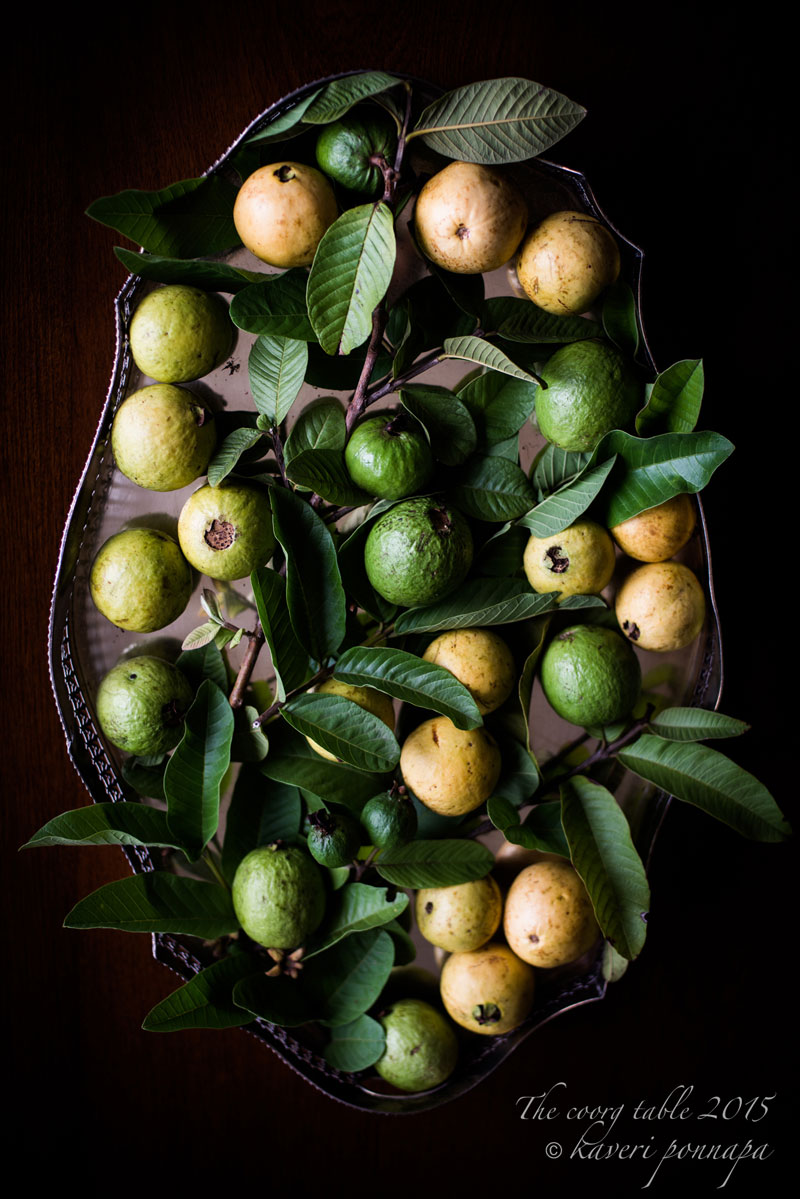 Our very own trees –that’s how we thought of them, and it is a great luxury to have your own trees –were beautiful to climb, with a smooth, silky bark, and peeling patches here and there. You could easily while away half a day tangled up in the branches and tough leaves, looking out for a hard, rough skinned green fruit to munch on, all the while trying to avoid being bitten by fierce armies of translucent red ants that always marched angrily up and down the limbs of the tree, standing out against the pale greyish bark.
Our very own trees –that’s how we thought of them, and it is a great luxury to have your own trees –were beautiful to climb, with a smooth, silky bark, and peeling patches here and there. You could easily while away half a day tangled up in the branches and tough leaves, looking out for a hard, rough skinned green fruit to munch on, all the while trying to avoid being bitten by fierce armies of translucent red ants that always marched angrily up and down the limbs of the tree, standing out against the pale greyish bark.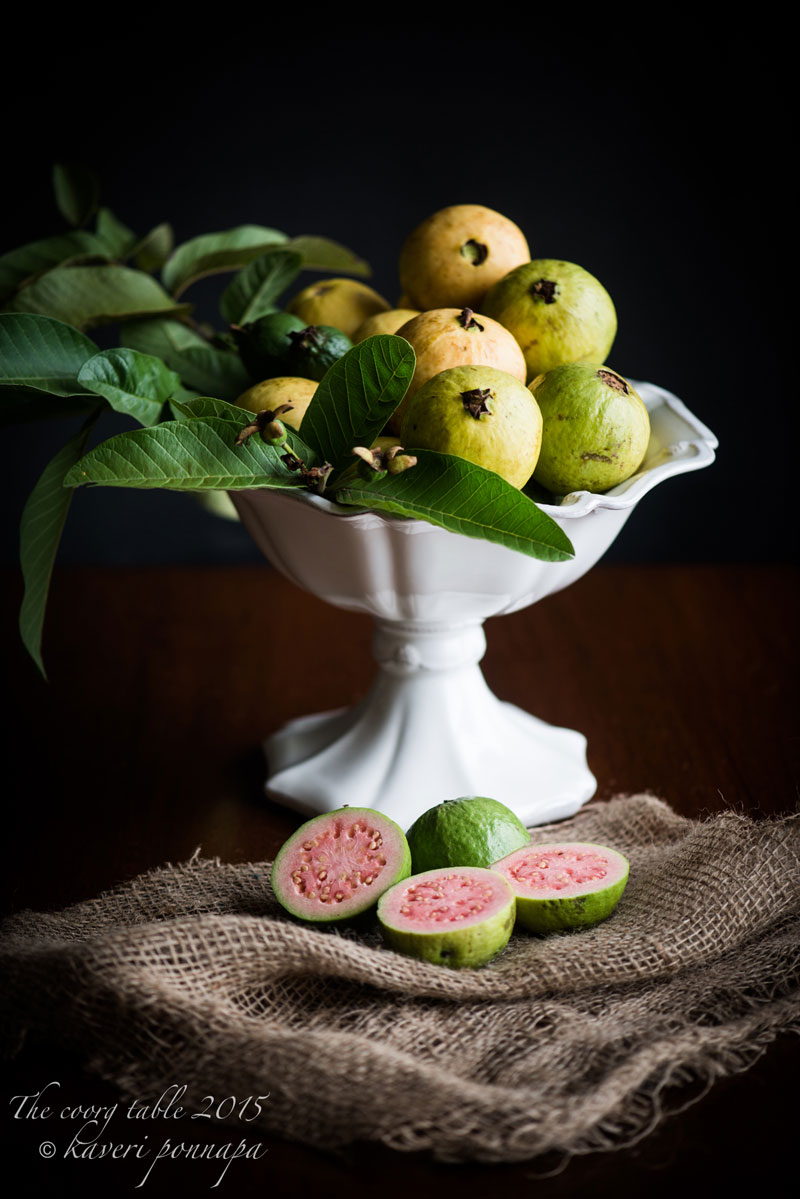 For a sweet-scented, ripe, fruit, you had to search much harder, because the birds usually got to it before anyone else and left untidily eaten, unattractive remains hanging on the tree. Green guavas were crunchy and refreshing, with a slightly sharp taste and quantities of hard, unforgiving seeds. They were usually plucked a little before they ripened, stored in baskets and consumed quickly, with generous pinches of salt and chili powder. They had a habit of ripening abruptly, rapidly, sending waves of thick, sweet fragrance into the air that could turn cloying all too soon. When you were tired of too much fresh fruit, guava shells stewed with cinnamon and cloves, without those terrible seeds, made a delicious dessert: fragrant, smooth, quickly and easily cooked. And then there was guava jelly.
For a sweet-scented, ripe, fruit, you had to search much harder, because the birds usually got to it before anyone else and left untidily eaten, unattractive remains hanging on the tree. Green guavas were crunchy and refreshing, with a slightly sharp taste and quantities of hard, unforgiving seeds. They were usually plucked a little before they ripened, stored in baskets and consumed quickly, with generous pinches of salt and chili powder. They had a habit of ripening abruptly, rapidly, sending waves of thick, sweet fragrance into the air that could turn cloying all too soon. When you were tired of too much fresh fruit, guava shells stewed with cinnamon and cloves, without those terrible seeds, made a delicious dessert: fragrant, smooth, quickly and easily cooked. And then there was guava jelly.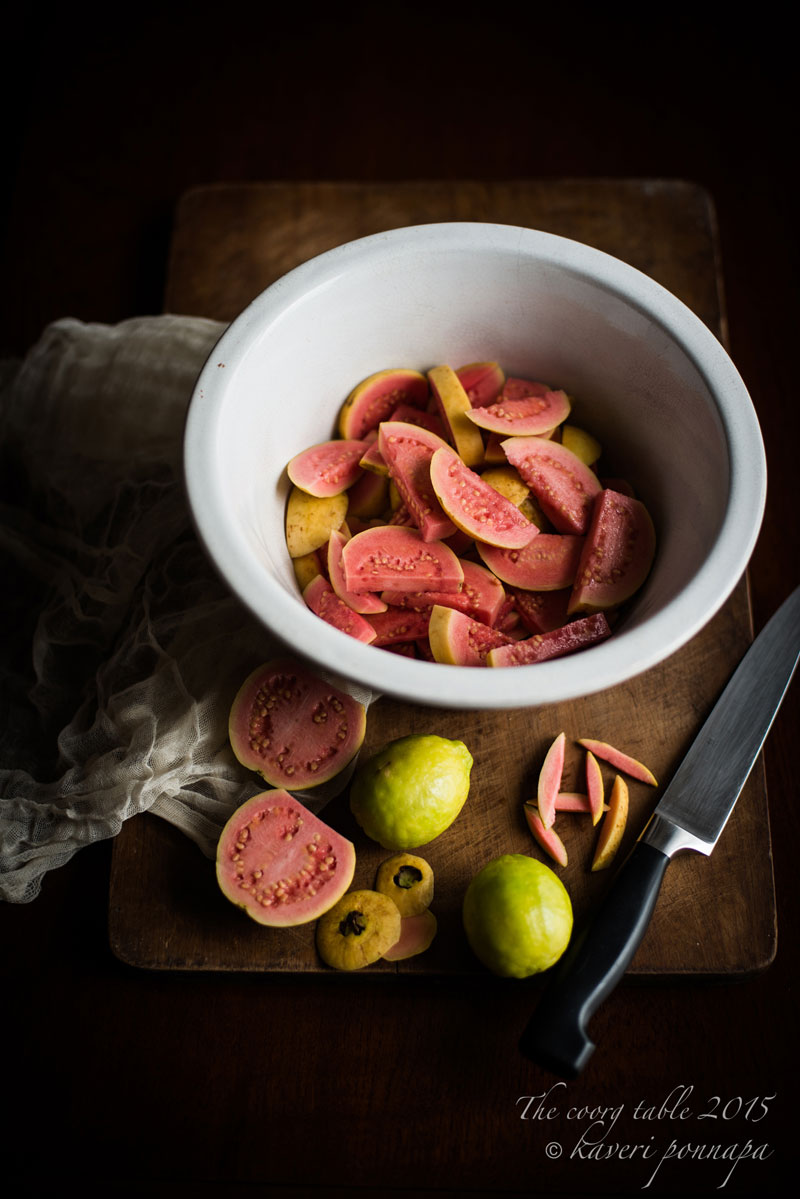 With time and patience, you can draw out the essence from the whole fruit, skin, seeds and all, into a juice. Slow cooked, the juice made with this ordinary fruit that we find in such abundance, arranged in intricate heaps like acrobats in a circus, on roadside carts, gives a clear, garnet coloured jelly, a bottled treat to be stashed away until the next season, about half a year away, if it lasts that long. We ate it with akki ottis or dosas and fresh butter and spread it over huge, soft slices of locally baked bread at breakfast, dipping happily into its concentrated sweetness.
With time and patience, you can draw out the essence from the whole fruit, skin, seeds and all, into a juice. Slow cooked, the juice made with this ordinary fruit that we find in such abundance, arranged in intricate heaps like acrobats in a circus, on roadside carts, gives a clear, garnet coloured jelly, a bottled treat to be stashed away until the next season, about half a year away, if it lasts that long. We ate it with akki ottis or dosas and fresh butter and spread it over huge, soft slices of locally baked bread at breakfast, dipping happily into its concentrated sweetness.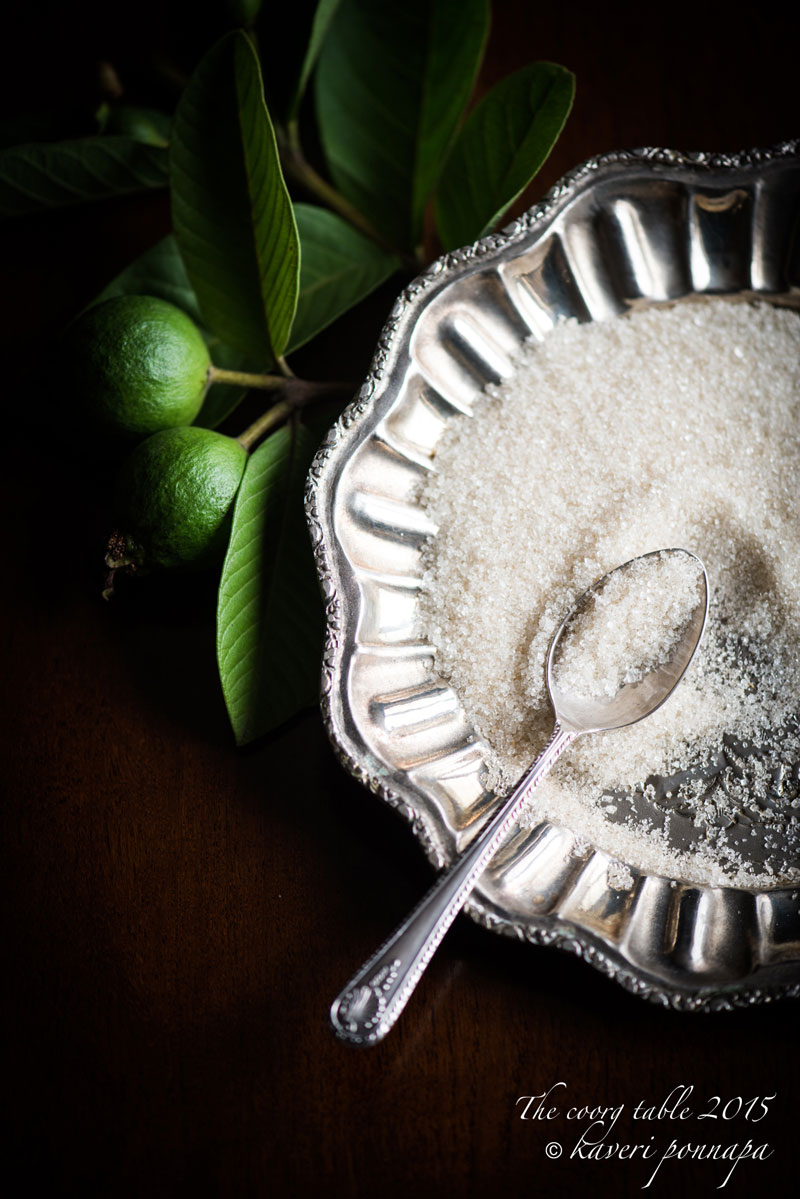 The intense sweetness of the guava begs for a foil, and I often end up throwing in a few perfectly red bird’s eye chillies, travelling companions of the guava from the same side of the world, that hang suspended in the jelly, slowly spreading their heat through the sweetness. Some kind of a throwback to eating ripe guavas dipped in chili powder?
The intense sweetness of the guava begs for a foil, and I often end up throwing in a few perfectly red bird’s eye chillies, travelling companions of the guava from the same side of the world, that hang suspended in the jelly, slowly spreading their heat through the sweetness. Some kind of a throwback to eating ripe guavas dipped in chili powder?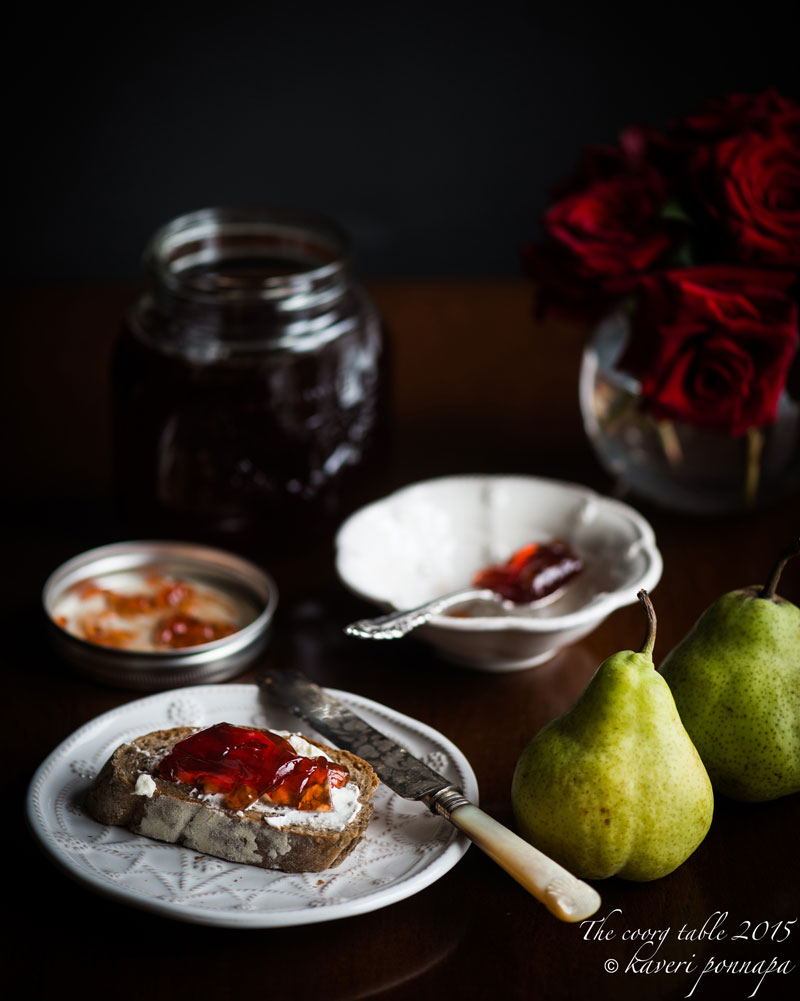 The left over pulp from the jelly can be cooked into an opaque, dense, sweet cheese, typical of Coorg homes, always, in my memory at least, placed against intricately cut patterns on pressed glass plates and served up to visitors. Guava cheese was at one time familiar enough to induce boredom; but now I look forward eagerly to eating a few of those soft cubes whenever they come my way. It’s a wonder how a fruit that never was ours –to begin with –is now so firmly fixed in our experience that its flavours can evoke home from halfway across the world. Recently, while travelling in Colombia, one of the biggest producers of guava, I unwrapped a small, rectangular slab of candy that a wonderful woman I know had packed for me to enjoy on my journey. One bite, and a whiff of that unmistakable, sweet fragrance sent my senses spiraling back to Coorg –it was the same guava treat that we still offer our guests. As for that jelly, it’s a small part of another world, one that I still inhabit.
The left over pulp from the jelly can be cooked into an opaque, dense, sweet cheese, typical of Coorg homes, always, in my memory at least, placed against intricately cut patterns on pressed glass plates and served up to visitors. Guava cheese was at one time familiar enough to induce boredom; but now I look forward eagerly to eating a few of those soft cubes whenever they come my way. It’s a wonder how a fruit that never was ours –to begin with –is now so firmly fixed in our experience that its flavours can evoke home from halfway across the world. Recently, while travelling in Colombia, one of the biggest producers of guava, I unwrapped a small, rectangular slab of candy that a wonderful woman I know had packed for me to enjoy on my journey. One bite, and a whiff of that unmistakable, sweet fragrance sent my senses spiraling back to Coorg –it was the same guava treat that we still offer our guests. As for that jelly, it’s a small part of another world, one that I still inhabit. 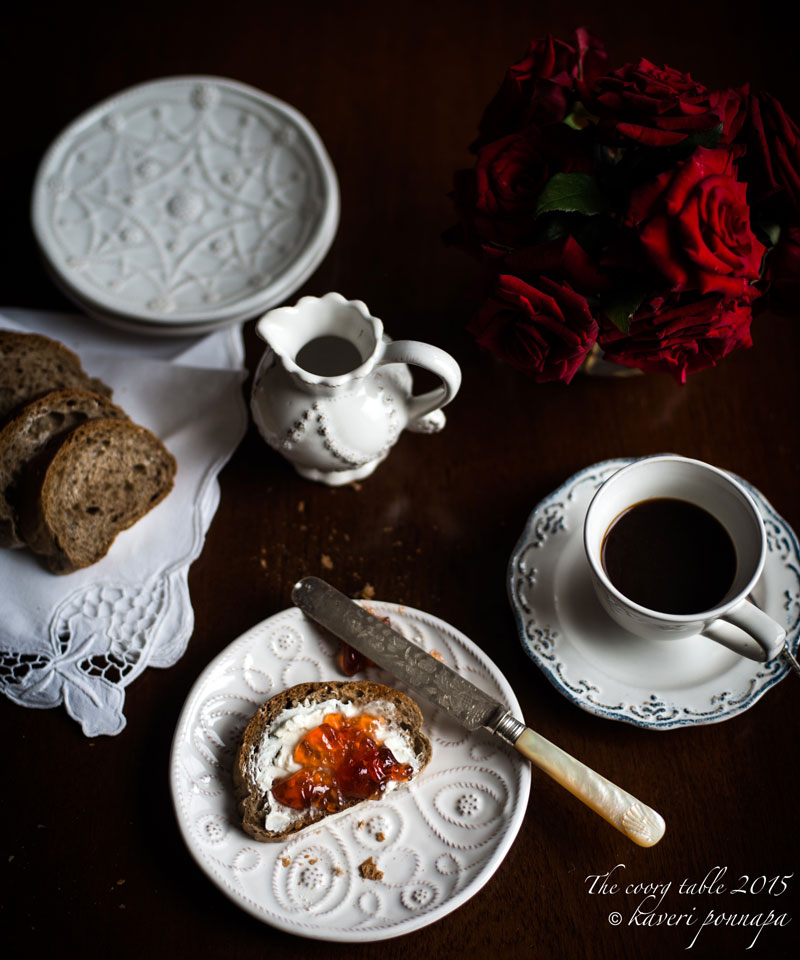
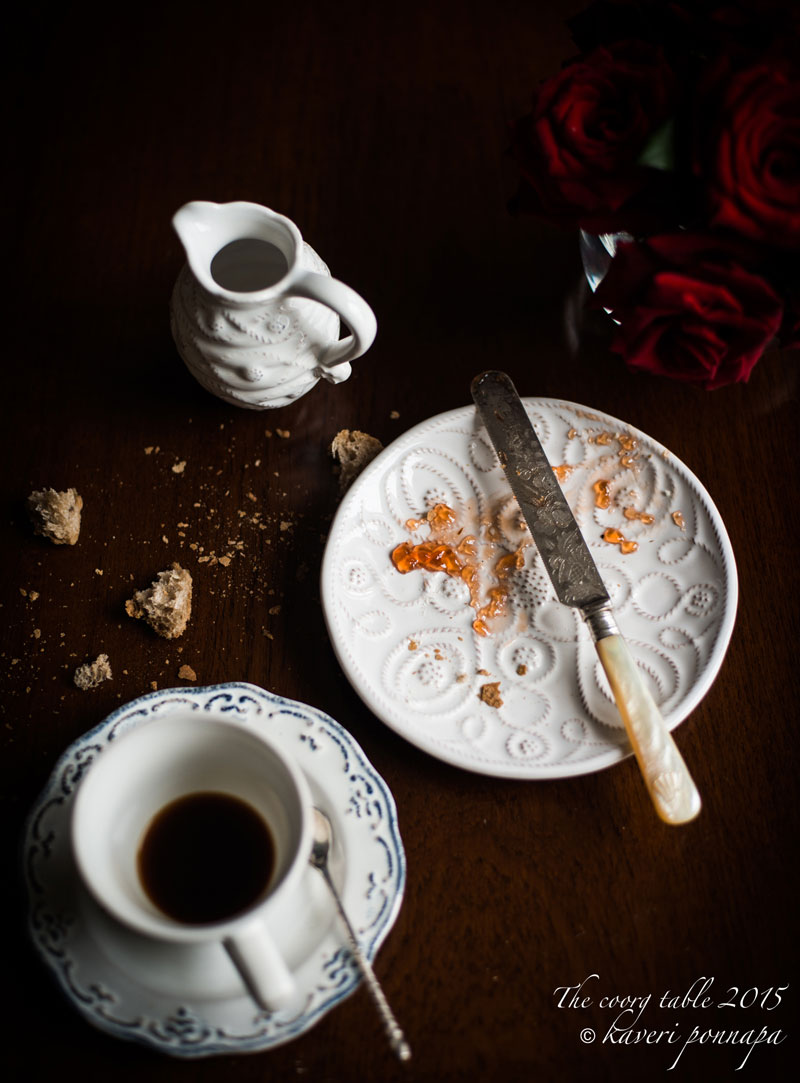
Photo Credits: Nithin Sagi
All Food Styling: Kaveri Ponnapa
Thank you for visiting this page. If you read something that you enjoy, or see an image that you like, please take a moment to write a response. Do look out for the recipes of all the food featured here in my upcoming cookbook.

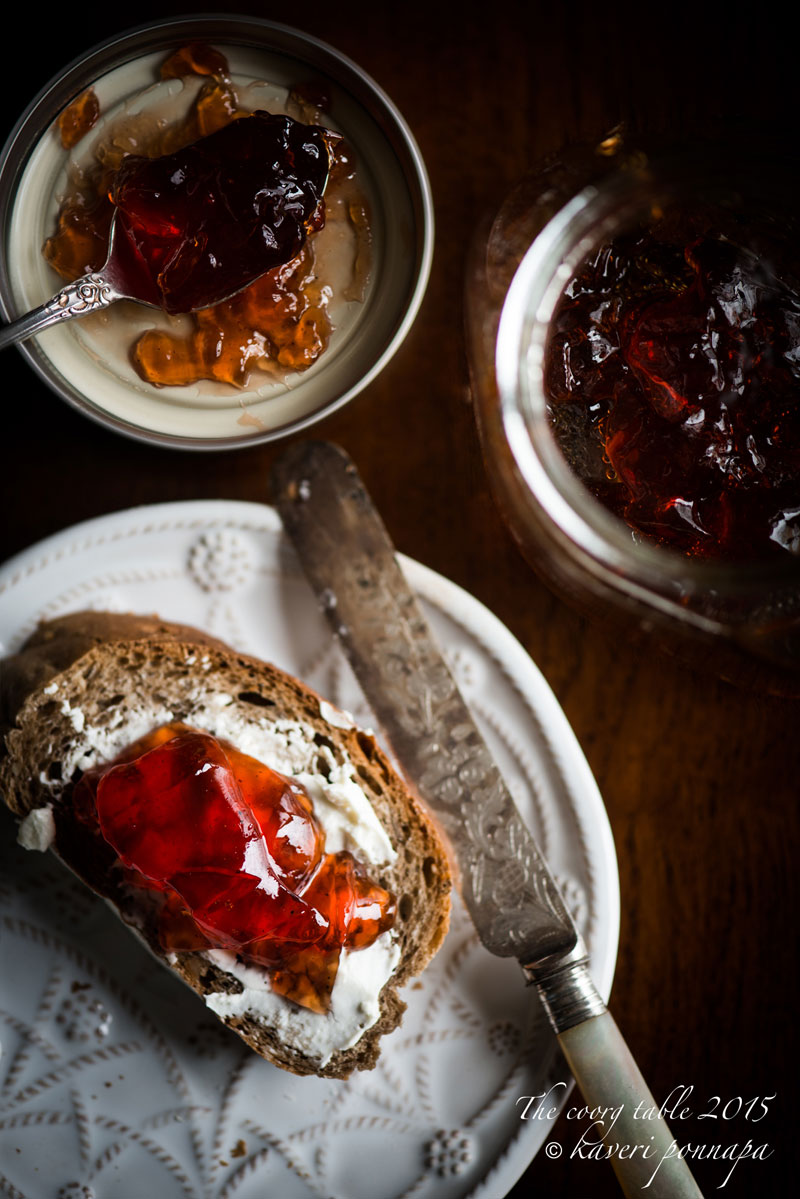
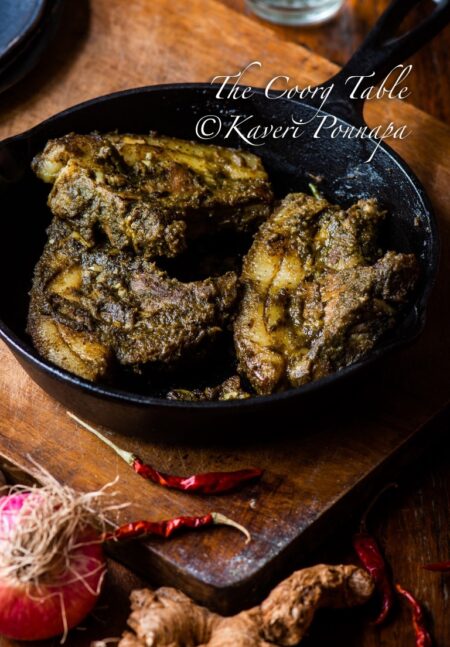


Always love your writings the photos and recipes! Did you ever sample the guava jelly I dropped off for you well over a year back? Perhaps it had too many rough edges! Stay well.
I chanced upon your webpage last week. Whenever I find time I go through your articles. They are so carefully and tastefully written. The images are just awesome. Your arrangement of each picture is just so beautiful. Thank you for the wonderful articles and taking me to the land of Coorg. Best wishes!
P.S. Do you have your recipes listed somewhere?
Hi Rajeshwari, thank you very much for all the lovely things you have to say about The Coorg Table. Everything you see is an expression of my absolute love for the place,culture,food, way of life. If you look through the posts, you will find that several of the recipes appear at the end. The ones that are not on the page, as well as the ones currently posted are going into a cookbook that I am working on.Hopefully it won’t take too long. Do try out some of the other recipes in the meanwhile. There are some very good ones here too: https://kaveriponnapa.com/plantation-style.html .In case there is something particular that you would like to know about, please write to me at: kaverikamb@gmail.com Please keep visiting these pages! Warm wishes.Kaveri
Radhika, you have such a beautiful way of describing the guava fruit that I can smell it, taste it. It makes me want to go home to get some….. Remember?
I do, so clearly. And I’ll come along with you when you go home,if you don’t mind! xoxoxo
guavas are neglected now what with the market full of dragon fruit and kiwis! Nice to be reminded of their specialness… in Nainital there used to be ” tuck box ” vendors who went around with steel trunks full of goodies for the kids in boarding schools and one of the best things they carried was cubes of grave cheese wrapped in butter paper.
That’s a lovely picture you’ve just shared Sonali, thank you. I can imagine how every little piece of guava cheese was hoarded and made to stretch and last. Whatever happened to butter paper? We just don’t seem to see it around as much as we used to. Homemade guava cheese is so good the flavour and texture are worth the effort of long hours of boiling. And it lasts for ages.Good reason to make some.Warm wishes.
We too had a guava tree at my grandparents’ home. It had the crispest, juciest seedless guavas and many a fuitful afternoon was spent with my cousins up in the branches, each one on our favourite perch, with a good book to keep us company. I still make gauva jelly though the cheese is, like yours, thanks to a friend.
I still feel the best guava jelly comes from the Coorg guavas, maybe because they’re fresh and organic.
Thanks for that trip down memory lane.
Hello Ponnu! I am so glad this post brought back happy memories of time spent at your grandparents’ home, and guavas. I’m sure you are right about the local gauvas being the best- maybe the soil of Coorg adds its own qualities to them-but they do taste different. Guava cheese is also a regular in my kitchen,I’ll be posting sometime; the gift from a friend was on my travels-just one bite made me nostalgic for home! Do keep reading these pages. Best wishes.Kaveri
Beautiful narration and even more captivating pictures. Guava jelly was the first fruit preserve I made in my teens and learnt how pectin behaves. This write up makes me want to make some guava jelly soon.
Thank you, Sangeeta, and I hope that you are going to make that jelly very soon, with guavas in season right now. I’m sure you will agree it is one of the most beautiful jellies ever-the colour, the fragrance and the taste. Try your next batch with a few bird’s eye chillies added towards the end of the process-very interesting variation on the flavour! Warm wishes.Kaveri
Nicely narrated with lovely images…Each house had guava tree and lot of childhood memories hidden it …wow! Nice…If possible Could you please share Recipe for Guava Jelly and Jam?
Hi Kaverappa, yes we did have a guava tree in each and every garden, and it was so much a part of our lives that it is hard to imagine they travelled from Central and South America. And all those treats from the common guava-at one time they seemed unexciting, but I love the flavours even better now. Recipes on their way, I will inbox you. Warm wishes.Kaveri